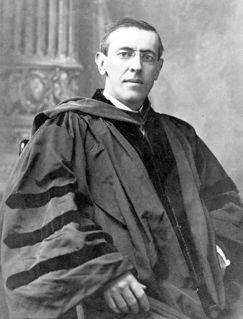Woodrow Wilson (1856-1924), the twenty-eight President of the United States, served from 1913 to 1921.
Prior to the Presidency
Born in Virginia in 1856, Woodrow Wilson came of age in the American South, growing up in Augusta, Georgia, and South Carolina during the Civil War and Reconstruction. As a young man, Wilson left the deep south for New Jersey, enrolling at Princeton University for his Bachelor of Arts and then on to the University of Virginia Law School before receiving a Doctorate in the History of Government from Johns Hopkins University.

His Southern childhood and Northern education would profoundly shape his politics -- embracing both a Progressive era belief in government as a tool for equity AND segregationist policies.
Wilson married Georgia-born Ellen Axson in 1885. The young impressionist artist trained at the prestigious New York Academy of Design and remained an active artist until her untimely death in 1914 as First Lady. Soon after they wed, the couple moved to Princeton where Wilson began his career as a political science professor. In 1902, Princeton appointed Wilson as University President—a post he held for nine years before entering public political life as the Governor of New Jersey.
After only a single term as governor, Wilson catapulted to prominence in national politics, winning the Democratic nomination in 1912 on a “Progressive” platform. He defeated Theodore Roosevelt, the Progressive Party candidate, and Republican William Howard Taft, making Wilson the first Southerner elected to the Presidency since before the Civil War.
Wilson’s two-term Presidency is to this day considered among the most consequential of the past century—making him the most studied president in American history. The long-lasting impact of his tenure is defined both by his achievements, which included America’s victory in World War I and the signing women’s suffrage into national law, but also for the enduring harm inflicted by racist policies of segregation in the federal government, the restriction of civil liberties during wartime and Red Summer of 1919, and the ushering in a new era of extreme immigration restriction.
